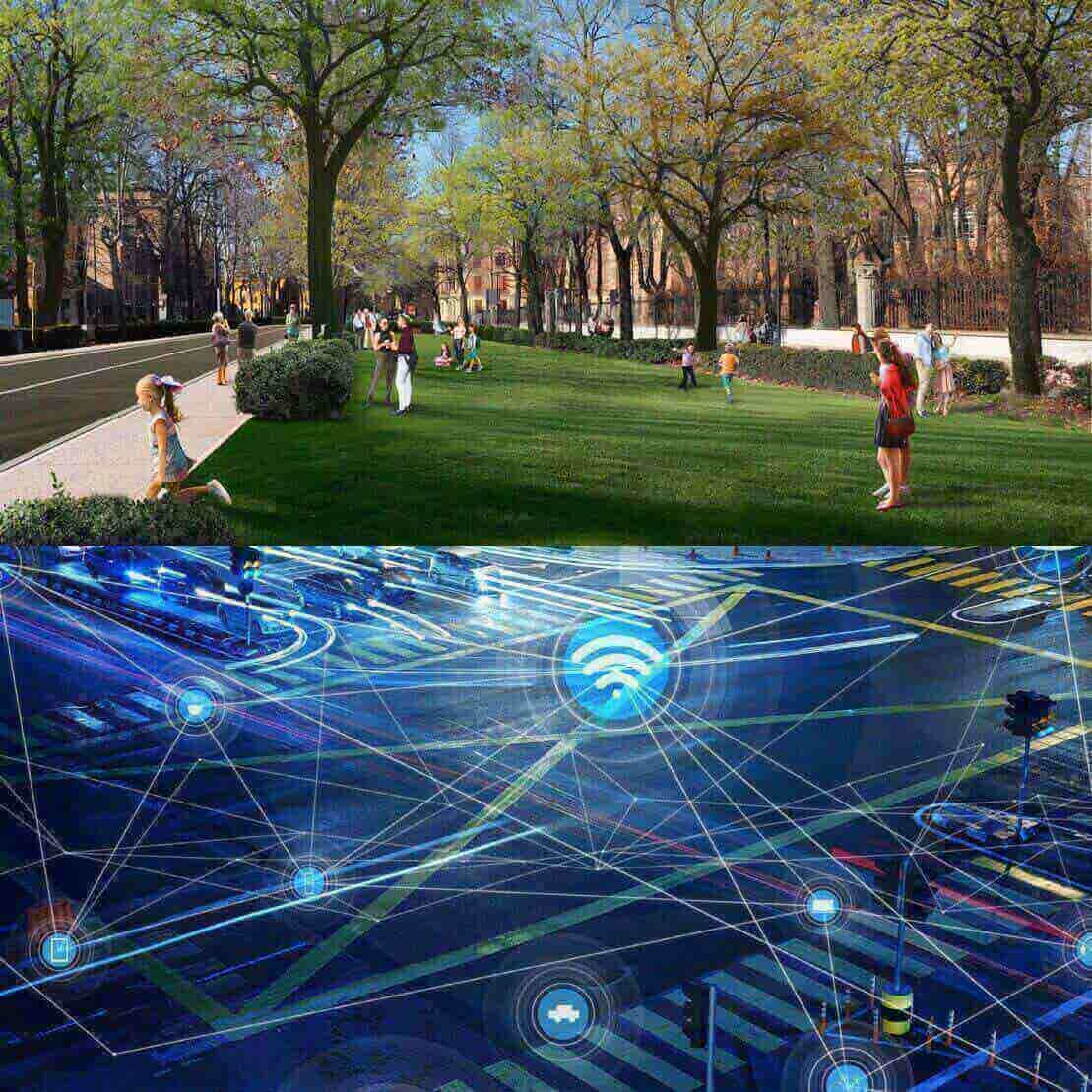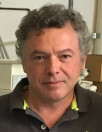A University-Driven Regional-Scale Initiative for Transitioning To Smart & Wise Cities and Towns in the Northern Italian Emilia Region
Written by Roberto Menozzi and Dario Costi
This article summarizes the motivation, ongoing activities, research challenges, and the inspiring principles of a research laboratory called Smart City 4.0 Sustainable LAB (SC4.0SL), founded in 2018 at the University of Parma to support public administrations and institutions and local stakeholders in the smart city transition, and developed in 2019 into a regional initiative involving all the universities of the Emilia-Romagna region. SC4.0SL aims at fostering a deeply interdisciplinary and holistic approach to the development of smart and wise cities and towns that encompasses the penetration of new technologies, the advancement of sustainability policies, the valorization of artistic and cultural heritage, and a principle of inclusiveness applied to both people and places. The active research directions and the research and intervention challenges – embodied by a series of pilot project proposed to the regional government and local administrations – are briefly described in the article.
Introduction
Urban problems and opportunities for action are often facing each other with little chance for structured interaction or prospect of sharing a comprehensive, organic, and integrated response tackling with determination the challenge of fostering today’s smart and sustainable cities. At every latitude, global warming, climatic and environmental emergencies, urban problems such as air quality, the degradation of physical and social spaces, the lack of security, the need for renovation of urban technological networks, and most recently, the ongoing COVID-19 crisis, are just a few among the emerging issues affecting life inside and outside our cities.
The Italian scenario adds its own specific problems to this picture, with densely populated cities with little, if any, possibility of land expansion [1], urban textures that are often particularly precious and fragile [2], deep-rooted local cultural identities, fickle policies, and the second largest percentage of older adults in the world (the first in Europe) [3]. These peculiarities – which are not an Italian exclusive but concur and converge in Italy with particular complexity and intensity – call for a deeply interdisciplinary and holistic approach in which the penetration of new technologies goes hand in hand with urban planning, as well as with an ever-evolving evaluation of the artistic and cultural heritage.
The Smart City 4.0 Sustainable Lab: From the University of Parma to the Regional Level
In this scientific, administrative, political, social, and cultural context, in March 2018, an official presentation at the University of Parma, Italy, [4] kicked off the activity of the research laboratory called Smart City 4.0 Sustainable LAB (SC4.0SL) supporting public administrations and institutions, and local stakeholders. A series of preliminary meetings with the city governments of the cities of Modena, Reggio Emilia, Parma, and Piacenza highlighted the needs of the cities of the Emilia area with the aim of developing a portfolio of research directions.
The next step was expanding the outreach of SC4.0SL to a regional level, seeking the involvement of all the universities located in the Emilia-Romagna region, together with public administrations and institutions, local stakeholders, private, public and multi-utility companies, professional organizations, and local communities. A number of goals was envisioned to articulate the general approach into several actions: practical support to cities and communities, development of scientific intervention methodologies, innovation for companies and the technical workforce, increase of awareness for public decision-makers, valorization of local identities in an internationally open context.
This process started by establishing a network of academic groups from the universities in Piacenza, Modena and Reggio Emilia, Bologna, and Ferrara, joining the group in Parma; the group started working on shared strategies and timelines. The regional reach of the laboratory allowed the convergence of professors, researchers, and innovative technologies from several and diverse fields into a shared common project.
In May 2019 a protocol of agreement was then signed with the Emilia-Romagna Regional Government with the main goal of defining Smart City development lines over a three-year time horizon, and a program featuring several work directions - including academic research towards a working methodology for public administrations, pilot projects for city administrations and regional institutions, and educational support for public administrations and the definition of emerging issues.
The Parma Smart City lab is thus at the center of a regional-scale network made of 46 research groups and 292 researchers working in the regional universities, covering all the disciplines that can contribute to innovate and valorize contemporary cities. The interdisciplinary/interuniversity working group currently features 10 PhD students - whose doctoral research started in Nov. 2019, 10 supervisors and 10 tutors, distributed among the regional universities. The PhD positions are co-funded by the Regional Government and by the research groups of the participating universities, with the aim of developing Smart Cities and Smart Land research lines through a long-term collaborative effort.
The Interdisciplinary/Interuniversity Working Group: The PhD Projects
The ongoing PhD research projects cover a wide range of topics:
- Strategic Urban Design [5] as a tool for the design of public space in the contemporary city: guidelines for the urban regeneration of small and medium-sized cities on an urban and architectural scale through the definition of a system of places as a new network of slow and sustainable mobility (University of Parma).
- Strategic Urban Design as a tool for developing scenarios of comprehensive transformation for contemporary cities towards competitive valorization of Western Emilia landscapes (University of Parma).
- Smart energy microgrid modeling [6] and smart sensing for renewable energy applications [7] (University of Parma).
- Smart mobility and autonomous drive [8]-[10], with specific attention to the Modena area, where test infrastructures have been integrated in the urban texture in the Modena Automotive Smart Area (MASA) [11] (University of Modena and Reggio Emilia).
- Ethics and the city: Experiences and evaluation/analysis criteria for urban needs (University of Bologna).
- Identities in contemporary communities and the urban and architectonic transformations of 20th century cities (University of Ferrara).
- The role of urban planning in coping with climate change effects in the cities of the Emilia region: limitations, existing obstacles, and potential benefits (University of Parma).
- Smart City and urban accessibility in the cities of Emilia region with specific attention to the links between the idea of smart city and those of urban regeneration and sustainable mobility (University of Parma).
- The productive soil: Planning of production sites and the relationships among technology, knowledge, and resources (University of Bologna).
- Small smart towns: The digital culture as a community and urban resource; investigating the relationships among community, historical identity, and urban transformation in small urban centers (University of Ferrara).
Research and Intervention Challenges: The Pilot Projects
The activity of the SC4.0SL in the nearest future aims at engaging public administrations and institutions as well as private stakeholders in a number of long-term pilot projects in a broad spectrum of areas of intervention, including healthcare - a dramatically critical sector these days - and mobility, for improved resilience and integration of state-of-the-art technologies in Italian historical urban and social contexts. Inspiring principles are sustainability, scalability over the whole spectrum from large cities to smaller localities, and accessibility of enabling services to an ever-increasing number of citizens.
Following are the topics of the pilot projects:
- A social network of interconnected pharmacy stores as a stronghold against COVID-19 and future emergencies for prevention, pre-diagnosis, and follow-up of health conditions.
- Requalification of decommissioned railway stations in small urban centers into hubs for social aggregation, education, and information.
- Requalification of public housing for smart working and co-working as a way to contrast inner city de-population.
- Re-design and interconnection of parks and empty areas to foster individual slow and green mobility and to add social value to home-workplace mobility.
- Re-design of the urban street infrastructure in view of the development of carpooling fully- or semi-autonomous drive vehicles aiming at 80% reduction of parking lot footprint, car accidents and vehicle-related pollution.
- Requalification through interconnection of small, dispersed museums and their integration in a cultural network engaging the community with events in city streets and squares.
- A Small Smart Town Network to strengthen and consolidate through the introduction of new technologies the economic, commercial, and social links existing among small communities.
- Proactive public housing policy for temporary residents (students, young couples, tourists, low-income and fragile citizens) to facilitate access to study/workplace for economic, social, and environmental benefit.

Fig. 1: The “Parma Città Futura” and “MASA-Modena Automotive Smart Area” projects aim at re-connecting public spaces for the urban community, experiment autonomous drive, and apply the innovations of the 4th Industrial Revolution.
Conclusions
Now, in its second year of activity, the regional initiative centered on the University of Parma, Italy, SC4.0SL laboratory has gained momentum on the fronts of academic research, collaboration with local governments and institutions, and dissemination, in spite of the difficulties due to the COVID-19 pandemic. The year ahead will be crucial to consolidate and integrate the results of the academic research projects, to deploy new methodologies of intervention and collaboration initiatives with local administrations through the pilot projects, and to kick off the educational program for public decision makers and administrators – a key tool to raise awareness and disseminate know-how –, with the ultimate goal of embodying in the context of the Emilia region a holistic idea of smart and wise cities and towns encompassing the penetration of new technologies, the advancement of sustainability policies, the valorization of artistic and cultural heritage, and a principle of inclusiveness applied to both people and places.
References:
- According to a recent study, the percentage of covered soil in Italy is 7%, while the European average is 4.1%. See https://www.istat.it/it/files//2017/05/Urbanizzazione.pdf
- With 58 inscribed World Heritage properties Italy leads the Unesco list, (followed by China with 56 properties): http://whc.unesco.org/en/list/stat
- https://data.worldbank.org/indicator/SP.POP.65UP.TO.ZS?most_recent_value_desc=false
- https://www.dia.unipr.it/sites/st27/files/allegatiparagrafo/23-03-2018/locandina_26-3-18_costi.pdf
- “Strategic urban design is a creative, collective process of re-imagining a functional urban region. It involves debating, refining and agreeing the urban region’s identity and its story of change. Strategic urban design facilitates and guides collective decision making by establishing a relational cross-boundary framework” (https://www.williemiller.com/strategic-urban-design).
- M. Simonazzi, N. Delmonte, P. Cova, G. Ferrari, F. Zanichelli, R. Menozzi, “Modeling of a university campus micro-grid for optimal planning of renewable generation and storage deployment,” IEEE Int. Smart Cities Conf. 2021, Sep. 7-10, 2021 (virtual).
- M. Simonazzi, G. Chiorboli, P. Cova, R. Menozzi, D. Santoro, S. Sapienza, C. Sciancalepore, G. Sozzi, N. Delmonte, “Smart soiling sensor for PV modules”, Microelectronics Reliability, 2020, https://doi.org/10.1016/j.microrel.2020.113789.
- G. Brilli, P. Burgio, “An open source research framework for IoT-capable smart traffic lights,” EAI GOODTECHS 2019, pp. 165-170.
- A. Masola, C. Gabbi, A. Castellano, N. Capodieci, P. Burgio, “Graphic interfaces in ADAS: from requirements to implementation,” EAI GOODTECHS 2020, pp. 193-198.
- M. Verucchi, L. Bartoli, F. Bagni, F. Gatti, P. Burgio, M. Bertogna, “Real-time clustering and LiDAR-camera fusion on embedded platforms for self-driving cars, “ IEEE IRC 2020, pp. 398-405, DOI: 10.1109/IRC.2020.00068.
- https://www.automotivesmartarea.it/?lang=en
This article was edited by Aris Gkoulalas-Divanis
For a downloadable copy of the September 2021 eNewsletter which includes this article, please visit the IEEE Smart Cities Resource Center.


To have the eNewsletter delivered monthly to your inbox, join the IEEE Smart Cities Community.
Past Issues
To view archived articles, and issues, which deliver rich insight into the forces shaping the future of the smart cities. Older eNewsletter can be found here. To download full issues, visit the publications section of the IEEE Smart Cities Resource Center.



